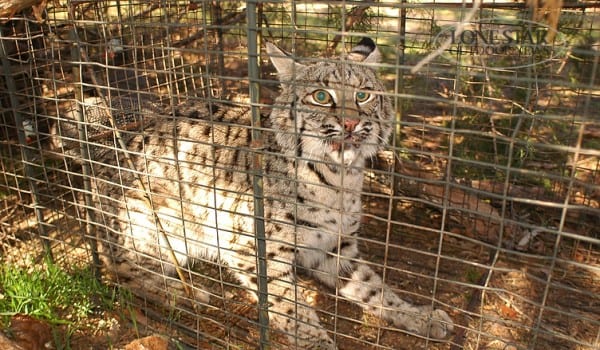http://news.google.com/news/url?sa=t&fd=R&usg=AFQjCNGY8oKLzh3F1NV6E4VwRGMzXk-DgA&cid=c3a7d30bb8a4878e06b80cf16b898331&url=http://www.lsonews.com/bobcat-study-take-place-dfw-metroplex/

Bobcat study to take place in DFW Metroplex

Many Texans have noticed something the past few years around their homes, even in the middle of large cities.
Bobcats are becoming more and more common in urban areas.
Researchers, wildlife managers and local government officials from Texas Parks and Wildlife Department, Utah State University, the U.S. Department of Agriculture’s Wildlife Service-National Wildlife Research Center, and Welder Wildlife Foundation have begun a study on the ecology of bobcats in the Dallas-Fort Worth area.
The purpose of the study is to better understand how bobcats live with humans in highly urbanized landscapes.
“Bobcats have learned to thrive in urban areas and will always be a part of our urban wildlife community,” said Derek Broman, TPWD urban wildlife biologist in Dallas. “The goal of this research effort is to answer important questions about urban wildlife to help DFW area cities and counties improve communication to their residents about how wildlife and people can co-exist.”
Bobcats are the most common wildcat in North America. Not to be confused with the much larger mountain lion, bobcats typically weigh between 11 and 30 pounds and have a short tail, long legs, and large feet. Though reclusive and mostly active at night, bobcats frequently leave cover to hunt before sundown and can be seen in a variety of habitats throughout Texas. In recent years, bobcat sightings have increased within the Metroplex.
The study area includes approximately 49,000 acres bordered by SH 183 to the north, SH161 to the east, SH180 to the south and Interstate 820 to the west. The area includes parts of Fort Worth, Hurst, and Arlington. Ten to 15 bobcats will be captured and fitted with global positioning system (GPS) collars so researchers can follow their movements and activities for one year.
Four bobcats – an adult female, an adult male, an adolescent male and an adolescent female — have been fitted with GPS collars so far. The female has since been seen with two kittens that are approximately seven months old. Before being released, each bobcat is photographed and tagged to provide a catalog of images for future identification. Blood, hair, scat, and parasite samples are collected from the animals for analysis on genetics, diet, and pathogens.
In addition to learning more about the life of bobcats in urban areas, researchers will also work with Texas Master Naturalist chapters to investigate the role that citizen science groups can play in complementing, supplementing or replacing field-based scientific investigations.










No comments:
Post a Comment